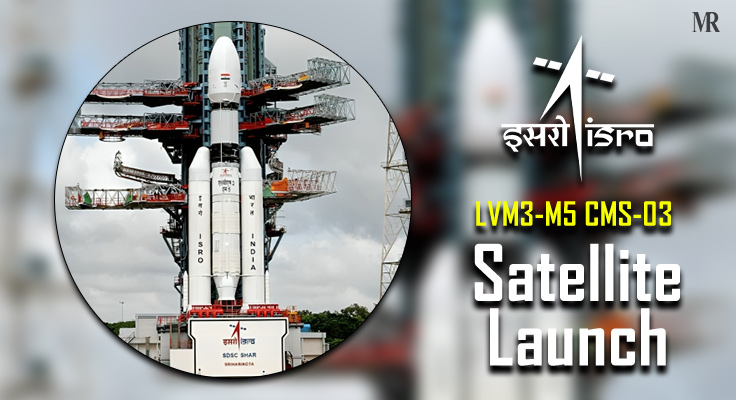I bet you might not have given a thought to this whenever you stream a movie, ask an AI chatbot a question, or store a file in the cloud—you’re tapping into a data center. These sprawling facilities are the digital world’s backbone, silently powering everything from Netflix to national defense systems.
But not all data centers are equal. The biggest data centers in the world are megastructures handling unimaginable amounts of data, compute power, and energy.
In this blog, we’ll explore the largest global data centers as of June 2025. We’ll uncover their tech, their scale, and the trends shaping them—like AI, cloud computing, IoT, and sustainability challenges ahead.
Understanding “Biggest”: Metrics and evolution
When we talk about the biggest data centers in the world, what do we really mean? The word “biggest” can finger point to many things. Let’s peel it one layer at a time, clearly and simply.
Some experts look at the total area the data center covers. For example, the China Telecom Data Center in Inner Mongolia spans over 10 million square feet. That’s the size of around 174 football fields!
Others measure power capacity in megawatts (MW). A top-tier data center like The Citadel in Nevada can consume over 650 MW—enough to power a small city. Still, some define size by rack count, which refers to how many server racks are inside. More racks often mean more computing power.
Another way is by looking at the number of buildings on a data center campus. A hyperscale campus might have 10 or more massive buildings. Each one of them is more like a factory. But instead of machines, it runs servers.
So while comparing the world’s largest data centers, it’s important to know which metric is being used, right?
Here’s the catch: there’s no single rule to define “biggest.” One report may say it’s about total floor space. Another may focus on electricity use. This makes ranking tricky. It’s like comparing cars by speed, size, or mileage—each gives a different winner.
Readers must keep in mind that “biggest” is subjective. It depends on what’s being measured. This simple idea sets the right expectation and avoids confusion.
That’s why lists of the biggest data centers in the world may look different depending on the source.
Years ago, a data center was just a server room in an office basement. These rooms stored files and emails. Over time, our digital needs exploded. Businesses moved online. Streaming, social media, and cloud computing became the norm.
Today, platforms like Omada play a key role in modern network management, offering centralized control over access points, switches, and routers across multiple sites—showing how far data systems have advanced from simple server rooms of the past.
To handle this growth, data centers had to be on a roll. Today, hyperscale data centers cover millions of square feet. Companies like Google, Amazon, and Microsoft are leading in this sector, unsurprisingly.
Think of it like this: your phone holds GBs of data. Now imagine storing data for billions of phones. That’s what the biggest data centers in the world do every day. They are the digital backbone of our modern lives.
Here are the 10 biggest data centers in the world
| Name | Location | Area | Power |
| China Telecom – Inner Mongolia Information Park | China | 994,062 sq.mt | 150 MW |
| The Citadel – Switch | USA | 668,901 sq.mt | 650 MW |
| Harbin Data Center | China | 663,000 sq.mt | 200 MW |
| Range International Information Hub | China | 585,000 sq.mt | 150 MW |
| Switch SuperNAP | USA | 325,000 sq.mt | 315 MW |
| Google Data Center | USA | 269,000 sq.mt | 100 MW |
| CWL1 Data Centre | UK | 185,806 sq.mt | 148 MW |
| Utah NSA Data Center | USA | 130,064 sq.mt | 65 MW |
| Apple Mesa Data Center | USA | 120,773 sq.mt | 70-130 MW |
| Lakeside Technology Center | USA | 102,193 sq.mt | 100 MW |
1. China Telecom – Inner Mongolia Information Park
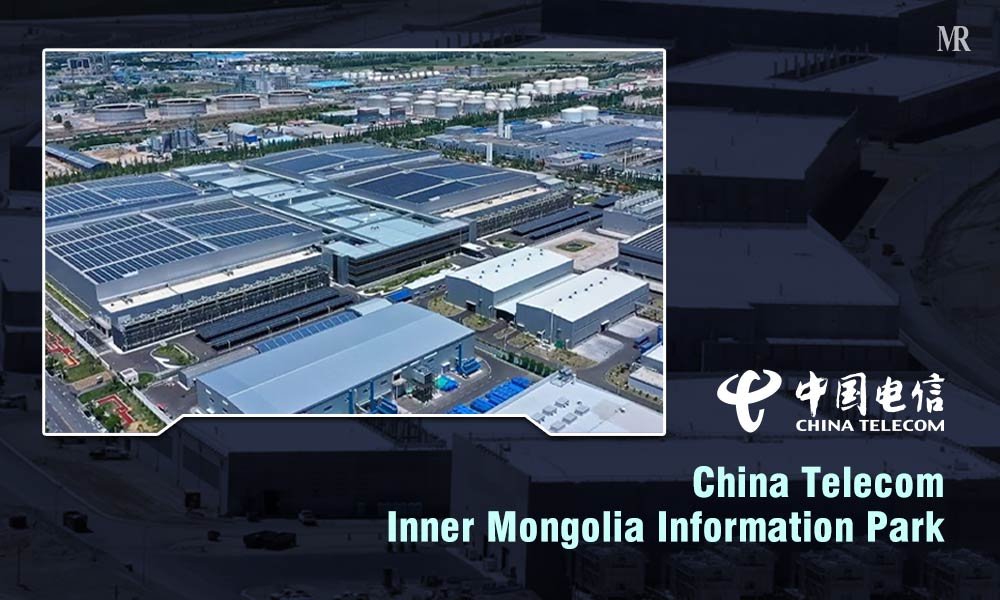
China Telecom is the biggest data center in the world, at least till today. Its cold, dry climate allows natural air cooling. That reduces energy use and cuts down on electricity bills.
But it’s not just a server farm. The park also includes offices, call centers, warehouses, and housing. It’s a self-contained city for tech. Companies like Alibaba, Tencent, and Baidu use this hub for hyperscale cloud services.
The data center connects directly to China Telecom’s national fiber network. This makes data transfer lightning-fast across China.
As of 2025, the cost stands at $2.58 billion. It currently holds over 50,000 servers. Eventually, it will support 100,000 racks and 1 million servers very soon.
That kind of scale easily makes it one of the biggest things in the world, both in capacity and infrastructure.
The park will have 42 data centers and 19 support buildings when complete. These will save 181 million kWh of power yearly. That reduces 180,000 tons of CO₂ emissions—a big win for the planet.
However, climate change may cause issues. However, the rise in outdoor temperature will increase cooling demands by 2030. So, future upgrades must focus on smarter cooling tech.
2. The Citadel – Switch
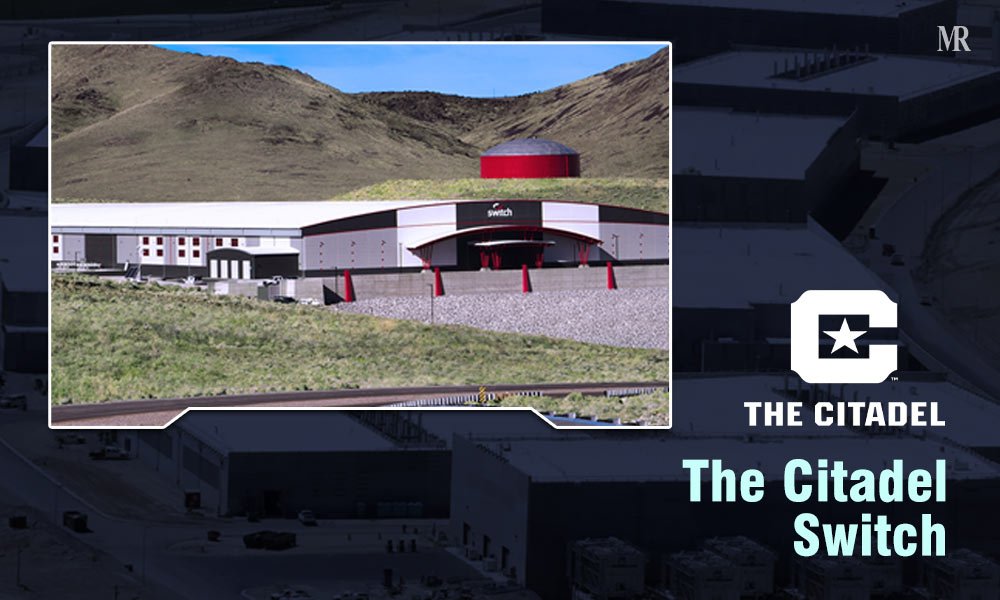
The Citadel Campus by Switch sits in Tahoe Reno, Nevada. It’s one of the biggest data centers in the world and the second on the list. And no point in guessing it’s entirely powered by renewable energy.
The facility uses solar energy, battery storage, and smart cooling to reduce its carbon footprint. Greenpeace even gave it perfect marks for energy transparency and 100% clean power usage.
It supports major tech companies—Microsoft, Amazon, eBay, Google, and more. These companies rely on the Citadel for hyperscale cloud, AI, and e-commerce operations.
What makes it unique?
- A 20-foot concrete wall surrounds the campus.
- The roof system (Switch SHIELD) can survive 200 mph winds.
- The SUPERLOOP fiber network gives super-low latency—just 4 ms to San Francisco.
So while it’s in the area of camels, it’s ultra-secure, smartly cooled, and super connected.
All these features make it one of the biggest data centers in the world, not just in terms of size, but in performance overall too.
As of 2025:
- Area: 1.4 million sq ft (TAHOE RENO 1).
- Power: 130 MW capacity; up to 55kW per rack.
- Cost: Around $1.3 billion.
Future growth is ongoing. With TAHOE RENO 2 and 3 underway, Switch keeps scaling to meet rising AI and cloud demands.
3. Harbin Data Center
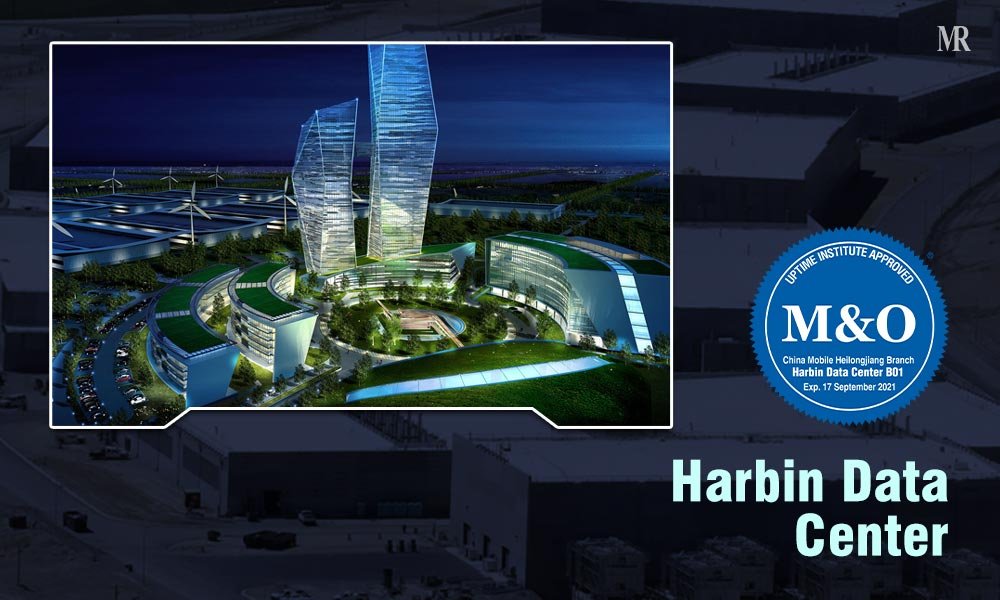
Located in Heilongjiang Province, the Harbin Data Center stands out for more than just size. It’s one of the biggest data centers in the world that leverages nature itself. Courtesy to Harbin’s cold climate, it uses natural air to cool thousands of servers, which slashes energy bills and boosts efficiency.
But size isn’t its only strength. The facility anchors China Mobile’s national cloud and telecom operations. It supports government, enterprise, and telecom workloads at massive scale. From cloud computing to training AI and IoT workloads, it handles it all.
That’s why it is placed at no.3 among the biggest data centers in the world, not just for size, but for smart design and function.
Strategic Location Highlights:
- Close to Russia and Northeast Asia for faster data transfers
- Low-latency disaster recovery and content delivery
- Acts as a digital gateway for international trade zones
The Harbin government fuels this growth with tech subsidies and tax breaks. Plus, the city built 3,420 new 5G base stations in just five months of 2025.
With green energy and AI-ready designs, Harbin is ready for the future, both in China and beyond.
4. Range International Information Hub
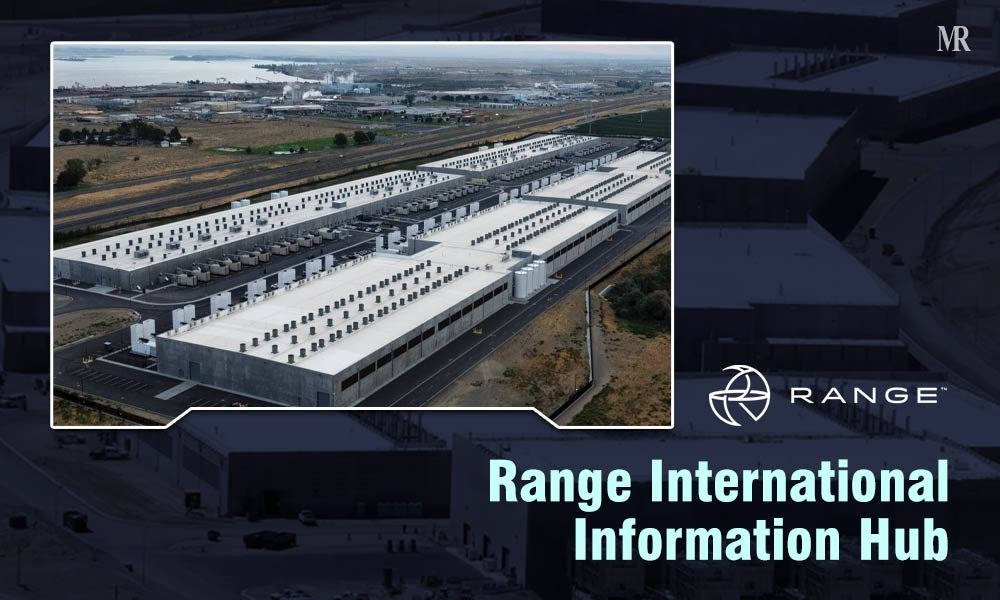
The Range International Information Hub in Langfang, China, stands tall as one of the biggest data centers in the world. It’s not just massive in size—it’s also deeply strategic.
This fourth-generation data center was developed with IBM. Together, they built a hub that powers both private firms and Chinese government systems. Its goal? To boost AI adoption and digital operations across sectors.
IBM provided everything from training to tech design, ensuring top-level performance and innovation. With its Pentagon-sized footprint, the hub shows what next-gen cloud infrastructure looks like.
Thanks to its location near Beijing, it connects to fast fiber networks. That allows data to travel like a bullet and smoothly across nearby cities like Tianjin.
Because of these features, it got placed at the 4th spot in the biggest data centers in the world.
Key Facts (2025):
- Estimated Cost: Between $1 billion to $3 billion
- Partners: IBM & Range Technology
- Capacity: Expected to host over 1 million servers
Although reports vary on timelines, the facility remains active in major data lists. It fuels cloud growth in China’s digital economy.
5. Switch SuperNAP
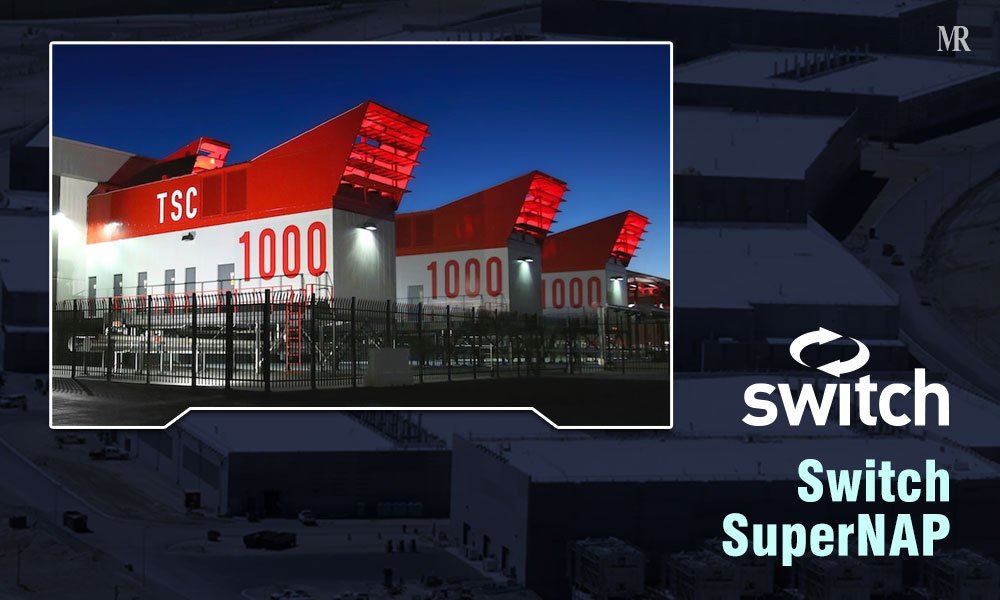
Switch SuperNAP isn’t just a data center—it’s an ecosystem. Designed by Rob Roy, it’s one of the biggest data centers in the world. It’s where renewable energy, extreme security, and future-ready tech all come together.
Since 2016, every Switch facility has run on 100% clean energy. From Las Vegas to Reno to Michigan, all campuses use solar and geothermal sources. They even built their own 100 MW solar project to make it possible.
Security is top-notch. Visitors are accompanied by guards with military combat experience. A massive wall surrounds each facility. Air conditioners and transformers are placed far apart to stop cascading failures.
That’s why Switch SuperNAP ranks among the biggest data centers in the world in both scale and reliability.
2025 Key Stats:
- Las Vegas Campus: 1.5 million sq ft, with 9+ data centers
- SuperNAP 7: 400,000 sq ft, 100 MW, PUE: 1.18
- SuperNAP 8: 350,000 sq ft, 50 MW, Tier IV Certified
- SuperNAP 9: 600,000 sq ft—Switch’s largest Vegas build
- Reno Campus: 3 million sq ft on 1,000 acres
What makes it smart? Cooling. Switch uses cool desert nights and its own custom AC units to cut heat and save power. Server rooms stay at 69°F and 40% humidity year-round, perfect for high-performance workloads.
With direct links to nearly every internet provider, clients enjoy blazing-fast cloud access with minimal errors. These facilities are home to over 1,000 clients, including eBay, Google, Sony, and Amazon.
Switch continues to expand globally—Italy, Thailand, and more. That’s why its SuperNAPs still earn their place among the biggest data centers in the world today.
Key trends and innovations in megascale data centers
1. The AI Imperative: Powering the Next Frontier
Generative AI changed the game. Since 2023, demand for compute has grown at a jaw-dropping pace. FLOPS capacity now grows 50–60% each quarter globally.
As AI advances, energy use explodes. In the U.S., AI data centers could consume up to 12% of total electricity by 2030—triple today’s rate.
To handle that, data centers are pushing rack power limits. A decade ago, 3 kW per rack was common. Today, 36 kW is normal, and 50 kW is expected by 2027.
It’s why the biggest data centers in the world now host racks running up to 100 kW, especially for AI training.
But this surge comes with major headaches:
- Air cooling is no longer enough.
- Floors must support more weight.
- Electricity delivery must be upgraded.
To adapt, operators are turning to liquid and two-phase cooling systems, which keep high-power GPUs from overheating.
2. Green Energy: A Growing Commitment
Sustainability isn’t optional anymore. Megascale data centers now build near solar, wind, or hydro to use clean power from the source.
Hybrid systems—like fuel cells paired with solar—help ensure 24/7 uptime even when renewables fluctuate.
Globally, renewable energy capacity will rise 84% in five years. This is crucial, as power demand from the biggest data centers in the world is set to double by 2050.
Cooling tech is also getting smarter:
- Liquid cooling cuts cooling energy use by up to 90%.
- Two-phase direct-to-chip cooling, rolling out in 2025, manages extreme heat loads easily.
Facilities are also reusing waste heat. Some redirect it to nearby buildings or factories, boosting overall efficiency.
3. Smart Sites, Smart Choices
New data centers are massive. Hyperscalers now look for 1–2 GW campuses near low-carbon power sources, including nuclear plants.
Cold climates offer free cooling. Water availability is key too. But here’s the concern:
By 2027, AI data centers could consume 1.7 trillion gallons of water annually. One site alone might use 50 million gallons per year.
That makes water efficiency just as urgent as power savings for the biggest data centers in the world.
4. Next-Gen Design: Speed and Security
Edge computing is growing fast. By placing servers near users, latency drops and performance improves—perfect for real-time apps like IoT.
Construction is faster now, thanks to modular and prefabricated data centers. These are scalable, flexible, and cost-efficient.
Operations are also becoming smarter. AI now runs:
- Predictive maintenance
- Energy optimization
- Dynamic workload management
Security is tighter too. Megascale sites use:
- Biometric access
- AI-based cyber threat detection
- Round-the-clock monitoring
Challenges and the road ahead
1. Energy Supply and Grid Strain
Power demand is exploding. By 2030, data centers may use 945 TWh of electricity—equal to all of Japan’s current use.
In the U.S., these centers could drive half of new electricity growth. But here’s the issue: data centers rise fast—often in two years. Utilities can’t build new power infrastructure that quickly.
As the biggest data centers in the world expand, grid planners struggle to keep up. That creates real risks of power delays and blackouts.
Even with solar and wind, consistency remains a problem. Grid upgrades take years. Renewable projects face zoning and approval delays. Some must wait five years just for a high-capacity connection.
2. Water Use and Environmental Pressure
Cooling needs a lot of water. A single hyperscale site might use 550,000 gallons a day—equal to 6,500 homes’ daily use.
By 2030, global data center water use may double to 1.2 trillion liters. That’s huge.
Most new U.S. sites since 2022 are built in water-stressed regions. That worsens local shortages and increases public concern.
Some operators—like Microsoft—now use recycled water systems. These save 125 million liters per site yearly, but slightly increase power use.
Still, the biggest data centers in the world must balance performance with planet-first practices, or risk backlash and resource limits.
3. Supply Chain and Material Bottlenecks
The scale-up needs tons of rare minerals, fiber cables, and cooling gear. But global supply chains are labelled as ‘handle with care.’
Delays hit projects due to shipping issues, geopolitics, and limited production zones—especially for semiconductors and batteries.
New sites need land, clean power, and steady supplies. That mix is hard to find, especially with local zoning laws slowing progress.
4. Talent Shortages and Training Gaps
By 2025, half of operators report staffing gaps, up from 38% in 2018.
Data centers are in search of experts in high-voltage power, AI, cooling, and automation, not just basic IT skills.
Meanwhile, retirements and pandemic shifts reduced the talent pipeline. Telecom and green energy companies are hiring from the same pool.
Even the biggest data centers in the world are now on their knees to find the right skilled and reliable engineers, technicians, and security pros.
5. What Lies Ahead: Opportunity Meets Urgency
Data center capacity will keep growing. We’ll likely see more mergers among hyperscale operators to scale faster and cut costs.
New tech like quantum computing will change infrastructure needs. But it will also increase energy and cooling demands.
Automation and AI will help ease staffing issues. Yet human judgment still matters—especially for troubleshooting and system security.
Most of all, sustainability will stay top priority. Even with better cooling and green energy, the massive use of water and power signals towards that little extra smarter design.
That’s why the biggest data centers in the world must be in the loop of change—to stay online, stay efficient, and stay sustainable.
Key Takeaways
So, what’s the big picture from our chat about these digital titans? Firstly, defining the biggest data centers in the world isn’t straightforward. Size involves area, power capacity, even server racks. It’s truly a complex measurement. Secondly, artificial intelligence dramatically reshapes their very core. AI demands push boundaries for cooling and power use. Furthermore, sustainability is not optional here. Green energy adoption and smart water solutions are crucial. Yet, significant challenges persist. Power grid strain and skilled talent shortages loom large. Ultimately, these critical infrastructures evolve constantly. They must balance explosive growth with urgent environmental responsibilities. Our digital future truly relies on their smart progression.











